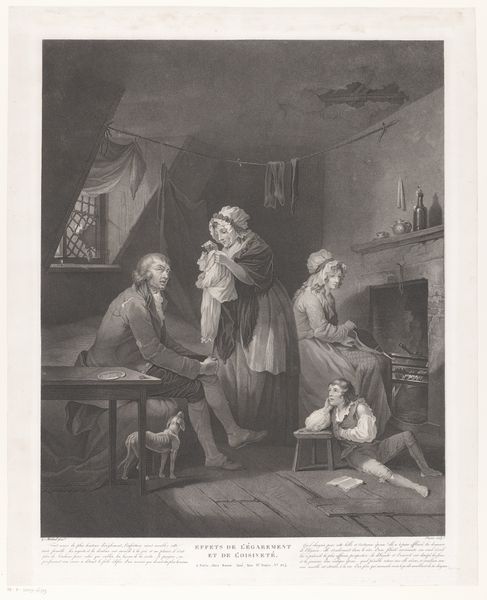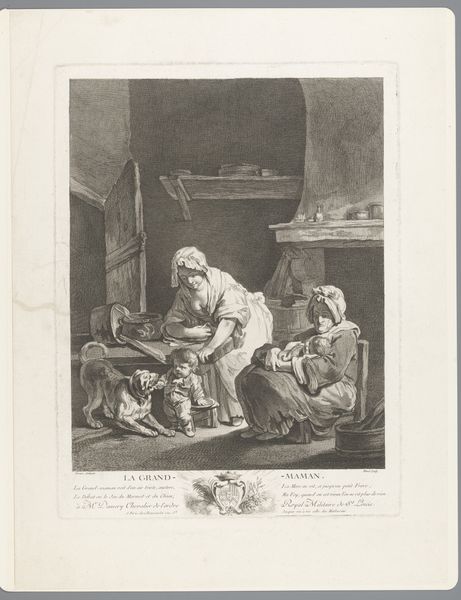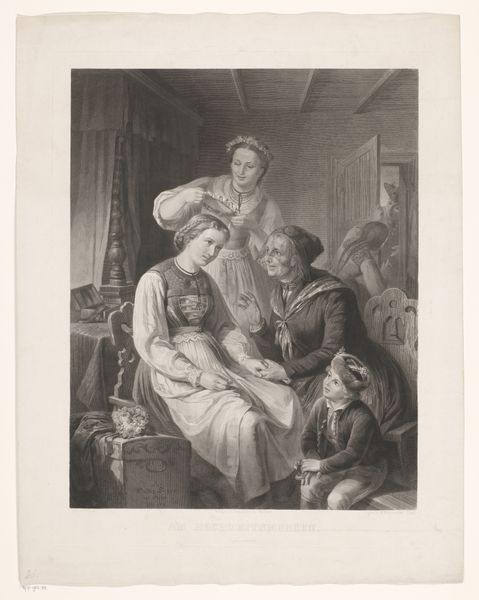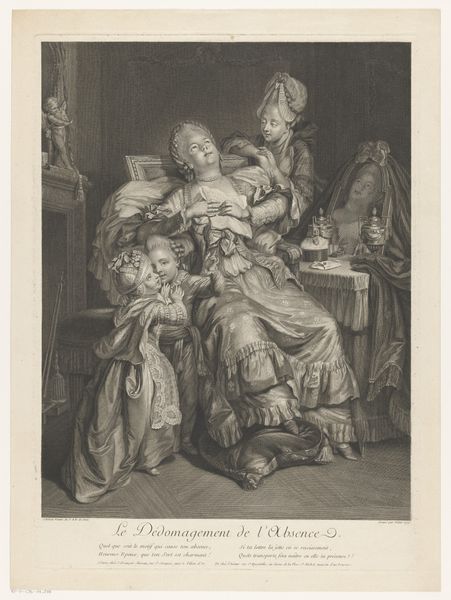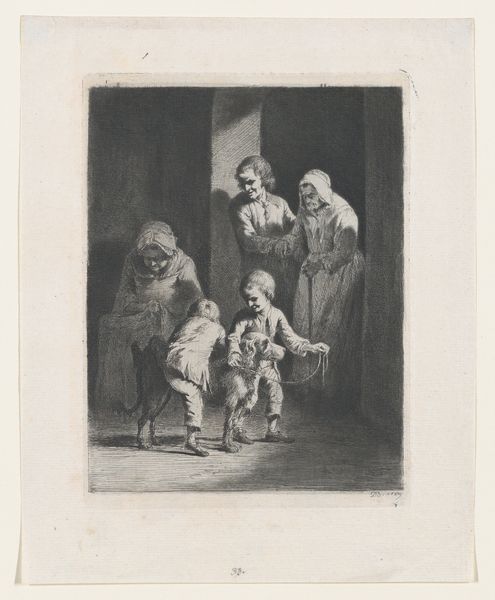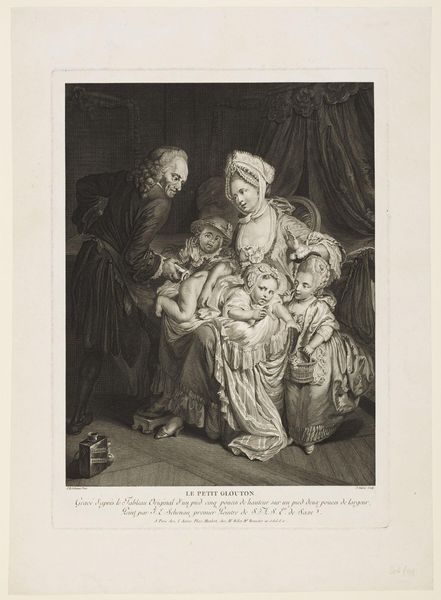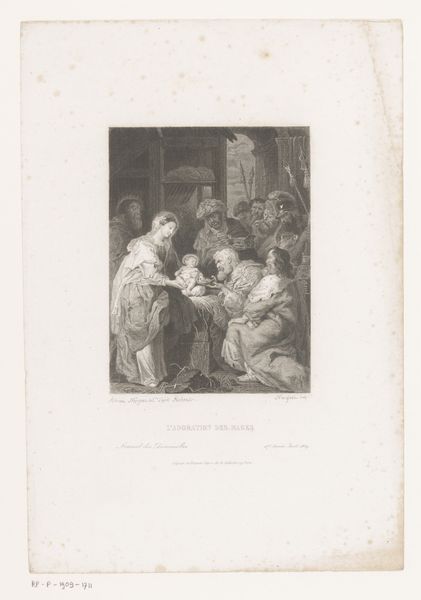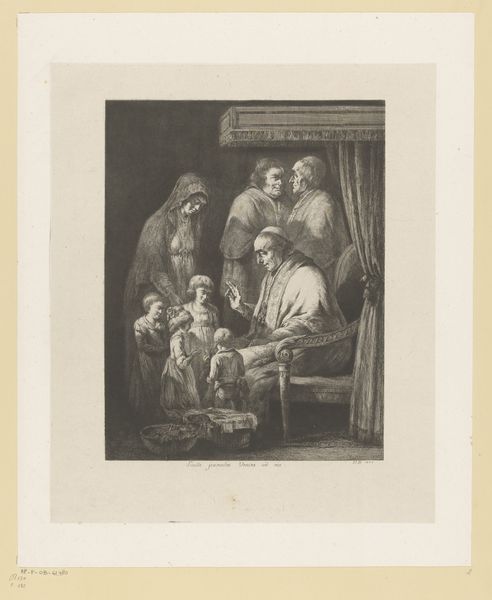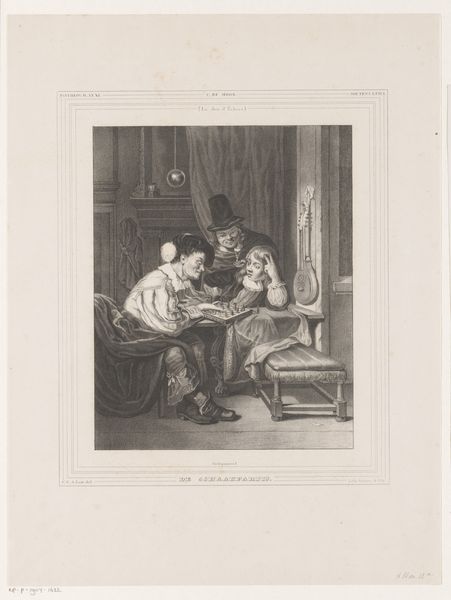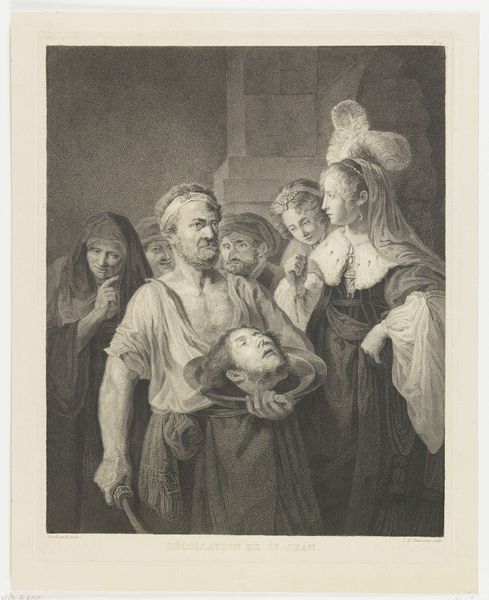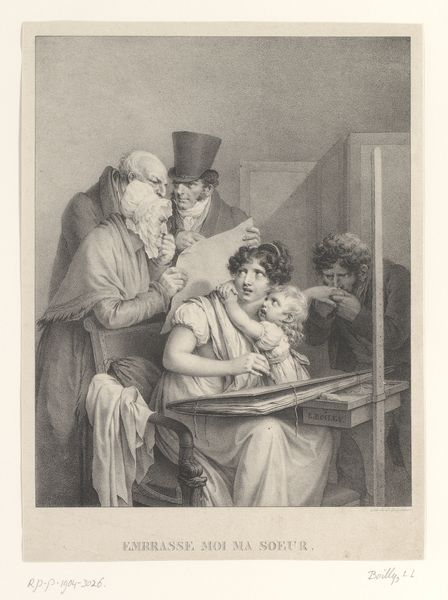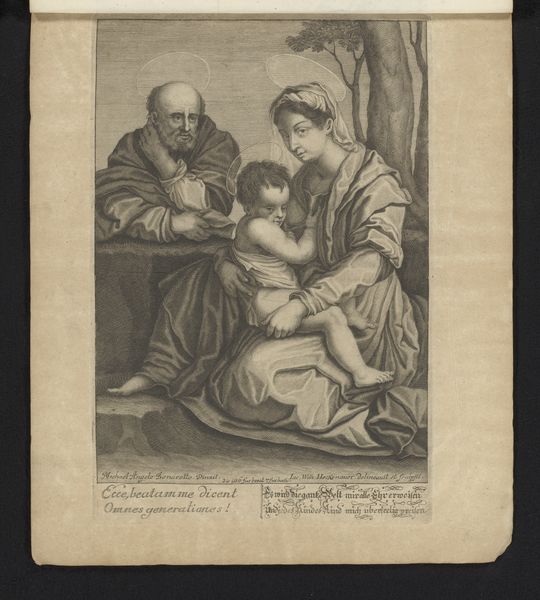
drawing, lithograph, print
#
portrait
#
drawing
#
narrative-art
#
lithograph
# print
#
group-portraits
#
romanticism
#
genre-painting
Dimensions: height 381 mm, width 283 mm
Copyright: Rijks Museum: Open Domain
Editor: Here we have Louis Léopold Boilly's "Grandmother shows her last tooth to her family", made as a lithograph in 1826. The image, though simple in composition, almost tells a story of family dynamics, with each character reacting to this… event? What strikes you about the visual aspects of the composition? Curator: Notice first the stark contrasts between light and shadow, employed with meticulous attention, no? This chiaroscuro effect sculpts the figures, emphasizing the crone-like visage of the grandmother. Boilly's keen observation translates the quotidian into an almost theatrical spectacle, evident by the almost neoclassical rendering of the face in comparison to the rendering of the textile in the image. Is there any visual tension between the various sitters? Editor: Absolutely. The faces display an impressive range of emotions, and each feels like a carefully placed element. There is a slight tension with where I am forced to focus due to the arrangement of their bodies. Where the young child and Grandmother sit causes a pull downwards, making me focus less on the upper sitters. Does the implied narrative contribute to its overall formal structure? Curator: Undeniably. The implied narrative serves as a scaffolding, dictating the gaze and focus. The arrangement and reaction serve a strong formal purpose, doesn’t it? This is a painting made not only of formal structure and line work but of gazes. Editor: This attention to light and almost stage-like construction does add an element that feels neoclassical and controlled to a work otherwise filled with Romantic expressiveness. I see your point about formal structure and gazes informing a reading that relies primarily on the composition, lines, light, and subject relationships in the image. Curator: Precisely. These structural elements invite consideration of the arrangement and interaction of each of the sitters and objects within the drawing, such that they become inseparable parts of its semiotic significance, offering not only a family scene but a visual dialogue of reactions, and in this way transcends from the simple every-day into something visually poetic and philosophical. Editor: Thinking about our conversation and how visual cues function in directing focus, it becomes clear that there's more than initially meets the eye in its composition! I find myself much more impressed by it than when I began.
Comments
No comments
Be the first to comment and join the conversation on the ultimate creative platform.
